Have you ever wondered how a new variety of strawberry plants is developed? The big, luscious strawberries that we all know and love haven’t always existed. In fact, they are a relatively new phenomenon. The original wild-type strawberry species produced (and still produce) tasty strawberries. But, those strawberry plants cranked out tiny (relatively speaking) fruits. When the first Garden Strawberry was successfully bred (see the Strawberry Plant page for more of the development history of today’s strawberry plants), the path was paved for the creation of the strawberry cultivars we grow today.
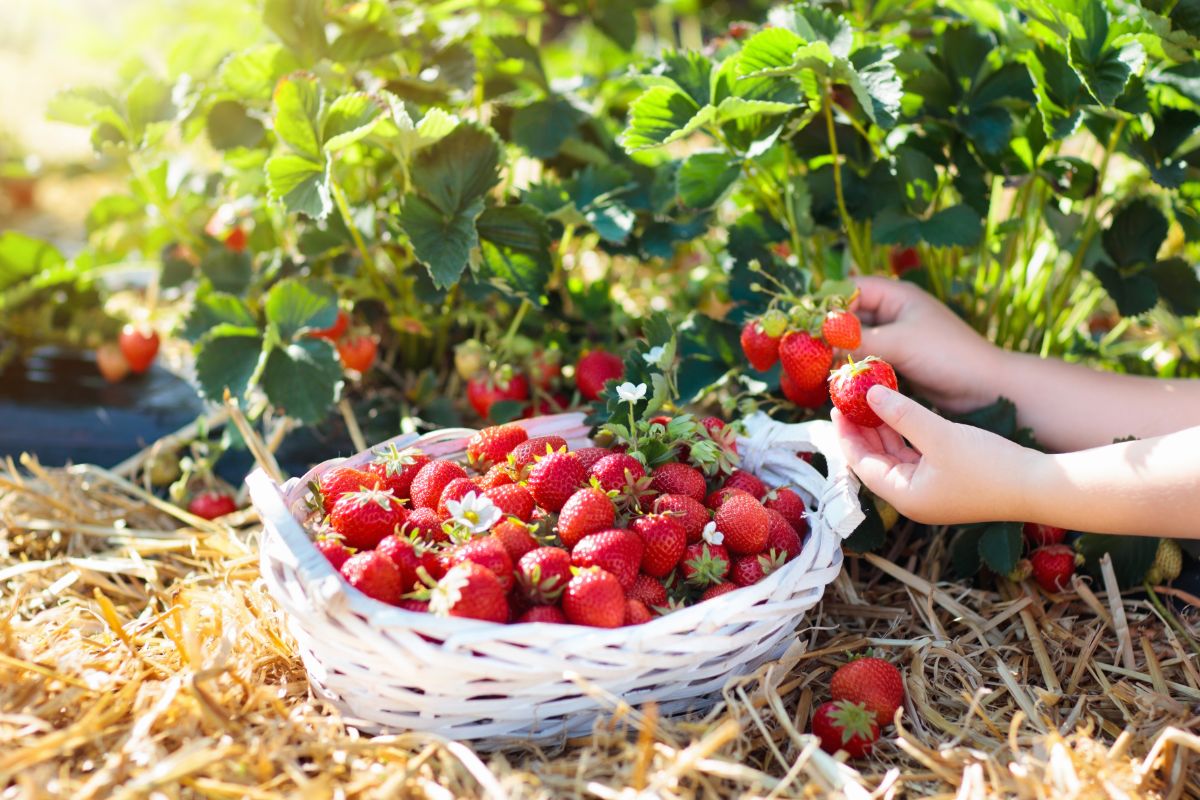
While the most successful breeding programs are funded by the state, individuals or non-governmental groups can endeavor to breed better strawberry plants as well. This post describes some of the thoughts and targets that should guide any strawberry plant breeding program.
Jump to:
- Genetically Modified Strawberries Need Not Apply
- What Are the Goals When Developing a New Variety of Strawberry Plants?
- Step 1: Determine the Traits You Want in the New Strawberry Variety
- Step 2: Choose the New Strawberry Variety’s Parents
- Step 3: Repeatedly Breed the Parent Strawberry Plants
- Step 4: Grow Strawberry Seedlings from the Fruit of the Crossbred Plants
- Step 5: Evaluate the Seedlings and Select the Best
- Step 6: Test the New Varieties of Strawberry Plants
- Step 7: Selection of the Specific Strawberry Plants that Perform Best
- A Few Closing Words on How a New Variety of Strawberry Plants is Developed
Genetically Modified Strawberries Need Not Apply
With the tinkering going on in the genomes of quite a few organisms these days, it may be a comfort to know that genetic engineering of strawberry plants is uncommon. All of the most commonly purchased and planted strawberry varieties have been developed using traditional crossbreeding methods. This means that the average plant breeder can strive to develop an improved cultivar himself in the same way the “big boys” do it (assuming you have the time, patience, and facilities needed).
What Are the Goals When Developing a New Variety of Strawberry Plants?
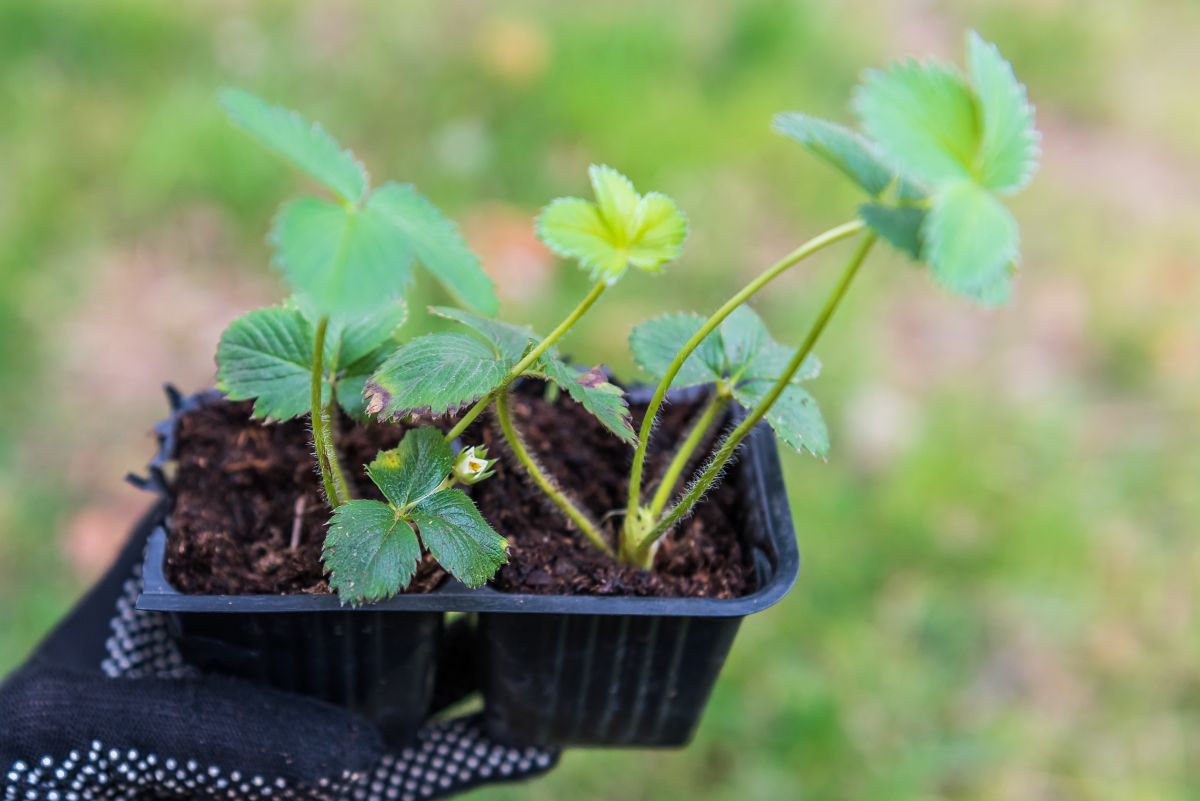
The primary goal of a breeding program is to develop a cultivar that is especially suited to a particular growing environment in ways that make it have superior traits when compared to existing strawberry varieties. New strawberry varieties should improve production efficiency and/or produce strawberries that possess more beneficial traits or better expression of beneficial traits. The major challenge is to develop strawberry plants that exhibit new and improved traits without diminishing or losing any of the previously established beneficial traits.
Additionally, new strawberry cultivars should be developed in an effort to solve environmental drawbacks for any given location. Because of this, different cultivars will likely be developed in different states that are ideally suited for the state or area in which it was developed. For example, a new cultivar that does splendidly in Maine may do terribly in Florida, and vice versa.
So, this is the process of developing a new strawberry variety:
Step 1: Determine the Traits You Want in the New Strawberry Variety
The desired traits will likely forever be in a state of flux. New strawberry varieties will be sought whenever changes in climate, weather patterns, and especially commercial demands and cultivation or agricultural practices change. And, with new, improved cultivars being developed, the standard for acceptance of a new strawberry variety will also continually ratchet upward.
It is almost a given that improvement in certain traits would be desired. If improvement in yield, strawberry size, ease of harvest, and the pattern of production can be achieved, this is desired. Other improvements can also be sought for strawberries destined for the marketplace. The appearance of the strawberries, the color of the berries, the durability, shelf-life, and shipping quality of the new strawberry variety, and flavor improvements are areas that can be targeted for new cultivars.
Breeding new strawberry plants that have resistance or tolerance against the common pests and diseases endemic to the target location is also very important. What good is a wonderful new strawberry variety if the plant gets killed off prior to harvest? The cull rate, level of uniformity of berry size, and the structure and size of the mature strawberry plants are all factors that can be targeted for improvement in a new strawberry variety.
Can change with the commercial market, will usually get increased standards as new strawberry plants are successfully bred. May also have to change with new improved or changing cultivation and agricultural practices. Target traits for any new cultivar include: improved production attributes (yield, production pattern, fruit size, ease of harvest), superior quality for both fresh and processing markets (fruit appearance, color, shipping quality, shelf life, and flavor), and resistance or tolerance to important pests and pathogens. factors that affect harvest efficiency (cull rate, consistency of fruit size, plant size and architecture) have gained importance. Therefore, further improvements in productivity must not be obtained at the expense of added production costs.
Step 2: Choose the New Strawberry Variety’s Parents
Once the traits that are to be targeted for improvement are identified, the parent plants must be selected. Here, established plants are usually selected based on their different strengths with the hope that the crossbreeding will pass on the beneficial traits from each, thus producing a new strawberry variety with improved overall traits and performance (with none of the negative characteristics of the parent plants).
Step 3: Repeatedly Breed the Parent Strawberry Plants
Once you have chosen your parent strawberry plants, crossbreed them. Again. And again. And again. The big operations and breeding programs will start the next phase only after performing 100 to 150 controlled crossbreeds between selected parent cultivars. Unless a backyard gardener has lots of time and space on his hands, he will have to settle for fewer crosses (and fewer opportunities to select a “winner” later).
Step 4: Grow Strawberry Seedlings from the Fruit of the Crossbred Plants
Once the genetic information is collected and stored within the seed, collect seeds, plant them, and grow seedlings (see the Strawberry Seeds page for help here). Here also, do what you can by planting as many as you possibly can. The big operations will start off with seedling populations well into the thousands (8,000 to 14,000, total).
Initial evaluations are performed on the basis of seedling performance, with primary populations of 7,000-12,000 seedlings established at both South Coast and Davis, and a supplemental population of 1-2,000 at Watsonville. Approximately 200-300 items are retained from each primary seedling population,
Step 5: Evaluate the Seedlings and Select the Best
The professional or state-sponsored breeding programs will only keep two to three hundred seedlings out of all those thousands. The strongest, most vigorous seedlings are selected and the others are culled. The small-time or home breeder should keep a higher percent of total seedlings. Usually selecting the top 5% is adequate.
Step 6: Test the New Varieties of Strawberry Plants
Now that the best seedlings have been selected, they need to be further tested. The seedlings should be planted in an area and in a way that simulates how and where they will be cultivated if it turns out they do have improved traits. The runner production should also be evaluated (for help, visit the Growing Strawberries page).
Additionally, if possible, the new strawberry varieties should be tested to determine their resistance or susceptibility to common pathogens and pests that commonly affect strawberry plants. This determination should be made for each retained and planted seedling strawberry plant group once they have been established. They should be tested for resistance/susceptibility to two-spotted spider mites, Anthracnose crown rot, and Verticillium wilt at a minimum.
Step 7: Selection of the Specific Strawberry Plants that Perform Best
It is time to pick the winning new strawberry variety! If the genetic manifestation of the targeted qualities is present without introduction of negative qualities, it is a winner. If, after multiple years of trials and observation, the new variety holds up and proves to be superior, it is time to release it. If it was created in the home garden, the developer gets naming rights, so be creative!
A Few Closing Words on How a New Variety of Strawberry Plants is Developed
It is not easy to create successful new strawberry cultivars. But, the benefits that come when success is found make it worth the effort. Plus, the home gardener will learn much throughout the process. In addition, remember that the entire process will take patience. The large breeders and development programs can complete the entire process and introduce a new strawberry variety in as little as 5 to 6 years. It is more likely to take a home gardener 10 or so years to adequately evaluate and record and prove that there is improvement.
But, remember, it can’t hurt to experiment. And, you never know…you might hit the jackpot on your first try and create a new strawberry variety that sweeps the fruit world by storm. Happy crossbreeding!
If you would like information on the many strawberry varieties that have already been developed, be sure to visit the Strawberry Varieties page.

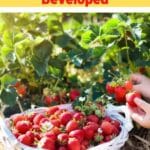
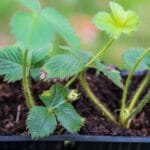
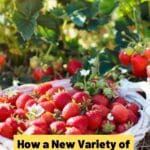
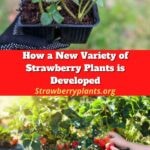

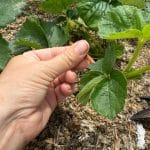

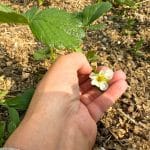
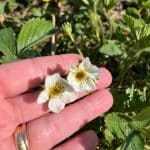
alpha says
Do you have any idea of about how many strawberry breeders (private, public, universities) there are in California, USA? And for growers as well ?
Taufik Alexander says
I would like to ask your opinions, what if me and my friend can develop a strawberry that can grow up to 180 cm, 6 times more taller then the hybrids strawberries, but the fruits has the same size like the normal strawberries plant( not a gigantic fruits). So in the future later instead planting on 6000 hectare of land we only needed 1000 hectare. Do we need this kind of plant? Just say there is one in this world what will happen? Or just say you manage to develop this Neo-Plant, what will you do???
DMeijer says
Taufik, I work for a European breeder, grower comercializer of strawberries and stonefruits. We have our own breeding programm and sell about 7 millions of kilos every year in early season. We are always keen to listen to new ideas and innovative varieties, especially early ones.. Send me and email on [email protected]
Vashti Wood says
Hi. I have three daughter plants (grown from runners) from a commonly sold variety here in Australia (I think they’re fron an “alinta” variety?)
In any case, I’ve noticed that one of the daughter plants is producing at least every other flower symetrically – that is to say, it’s putting on flowers with 4 or 6 petals.
And another of it’s sister plants just put on a 7 petalled flower.
How normal is this? I can’t find any info anywhere online so far.
Vashti
Mr. Strawberry says
Vashti Wood,
It is fairly common and shouldn’t affect the health of the plant at all. Good luck!
aila says
hai, i want to ask about hybrid plant. i just got an idea. i want to hybrid tulip with strawberry. means strawberry will produce in the middle of tulip. but i dont know the gene sequence or any method of process that i may used. just need the information about the method. can someone help me. urgent task that need to accomplished. tq
Mr. Strawberry says
aila,
That sounds like a fantastic idea! However, the genetic engineering required to pull something like that off is considerably more advanced than anything out there today. Strawberries will not hybridize with tulips naturally, so a creation of the type you mention would be wholly dependent on brilliant laboratory scientists with a much greater degree of technological sophistication that we have today. I’m sorry!
Mitchell says
Is there anywhere that I can get more information on the differences between Evie and Evie 2? I keep reading that Evie-2 produces the biggest spring crop out of all the day Neutals. Will evie produce that same huge crop in the Spring? That is kind of my biggest concern here.
Mr. Strawberry says
Mitchell,
I would recommend contacting the suppliers of each. They should be able to answer to your satisfaction. Sorry I’m not more help! Good luck!
Mitchell says
Is the cultivar “Evie” and “Evie-2” the same variety? I have seen these 2 different names used on the web. I’m not sure if they are the same thing or not.
Mr. Strawberry says
Mitchell,
They are very similar, but Evie-2 is a selected strain of Evie. Good luck!
Mitchell says
Are there any sites I can get the “Buddy” strawberry cultivar from that ship to The United States? I really like the good stuff I read about this cultivar. But, Whenever I find a site that sells this cultivar it is always a UK website. And when I try to purchase them, I have to select my country. The United states isn’t listed on any of those sites, so I am assuming that they don’t ship to the U.S. Why is this variety only on UK sites? from the patent link below it appears to be from the U.S. since the patent number says “US”. DO you know of a website that sells and ships this cultivar to the United States? Thanks in advance.
Sincerely
Mitchell
http://www.google.com/patents/US20130097755
Mr. Strawberry says
Mitchell,
I am not aware of any U.S.-based suppliers of the ‘Buddy’ cultivar. It was developed in the U.K., if I’m not mistaken, not the U.S. The reason there is a U.S. patent for it is to prevent an individual from getting a plant over here somehow and then selling it. It is very common for patent-holders to file for patent protection in other jurisdictions in order to capitalize on a legal monopoly granted to them for rights to their products or developments. And, you are correct. Most live plants can’t be shipped through U.S. customs. Sorry!
Mitchell says
Do you happen to know if Blue strawberries are real. At first I thought there were photoshopped, but then I found seeds for them on ebay. The sellers appear to have high ratings. I asked some of the sellers where they were from and they said they were imported from Europe. They also said they can’t be GMO because of that.
Is there really a non-GMO blue strawberry out there?
Mr. Strawberry says
Mitchell,
No, blue strawberries are not real. The pictures are photoshopped. If they were real, there would be a large market for them as a novelty item, and the major seed outlets and plant suppliers would be selling them in a blink, just like what happened with the Pineberries. The black, blue, and neon-colored strawberry pictures out there represent either naive resellers or fraudsters, at present. Sorry!
Mitchell says
Thanks for the response. That helps a little bit, but I was also wondering, Do any parts of the flower have to be removed to prevent self pollination? I know that with same plant species that is neccsary. Are there any videos online that show how do make strawberry hybrids? I looked around and haven’t had any luck.
Mr. Strawberry says
Mitchell,
Since each individual flower usually acts as either male or female (and not both simultaneously), simply isolating the flower from others should be sufficient. However, if you need absolute accuracy and assurance that pollen from one flower’s stamens hasn’t fertilized the female pistil, you can use very fine snips to carefully remove the immature stamen as soon as they can be identified. They are the small “stalks” that surround the “fuzzy” pistil on the inside of the flower’s petals. To make a hybrid, as in a cross-pollinated hybrid between two different varieties of the same species, just take a fine-bristled makeup brush or paintbrush and gently brush the stamens of the flowers of one plant with the flowers of the other variety. There are also forced hybrid strawberries that yield strawberries with pink or reddish flowers, but those are not achieved through normal pollination methods. I am not aware of any videos documenting hybridization techniques, but there are plenty on YouTube about pollination. Good luck!
Mitchell says
exactly how do you crossbreed two strawberry plants? Usually you would transfer the pollen from one flower to another, but strawberries are self pollinating plants. So, how would you control what strawberry variety a strawberry plant gets cross pollenated by?
Mr. Strawberry says
Mitchell,
Strawberry plants are generally self-pollinating, as you reference. However, although each flower itself tends to be hermaphroditic, any individual flower tends to function as either male or female, not both simultaneously. Consequently, to cross pollinate strawberry flowers effectively, one flower from each plant should be isolated and prevented from coming in contact with pollen from other flowers on the same plant or other flowers from other plants. Then, taking the pollen from a known variety, it is applied to the flower of another known variety. That way, the specific varieties that produced the cross are known. Hope that helps!
Michael M. says
I grow hydro indoors mainly and have worked with breeding other plants the other ones are evergreen so I don’t have to worry about the dormancy period. How would you go from hydro to dormancy and back? (I can’t find no information specifically to hydro dwc) Also, I know it’s hard to go from hydro to soil. Do you think that possibly using the sand dormancy technique would work for hydro and soil? It would make it a lot easier to clean back up for hydro or just plug it into soil since it is already in sand. I will just be using this system on top producing outdoor plants bred with local wild strawberries to up the cold resistance and disease resistance (main goal). My secondary goal after that will to be looking for better production. My tertiary goal is top increase yield.
Mr. Strawberry says
Michael M.,
I haven’t worked with hydro much, so I can’t say for sure. From what I understand, however, it is typically best to use a day-neutral variety and ignore dormancy altogether if you will be growing indoors. Sorry I’m not more help with this one! Good luck!